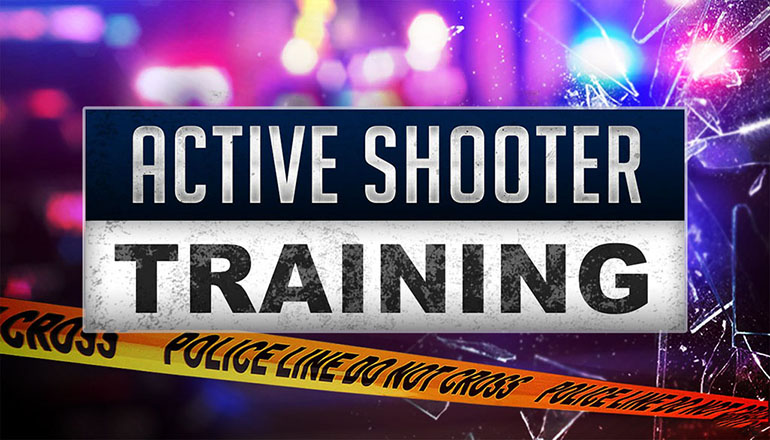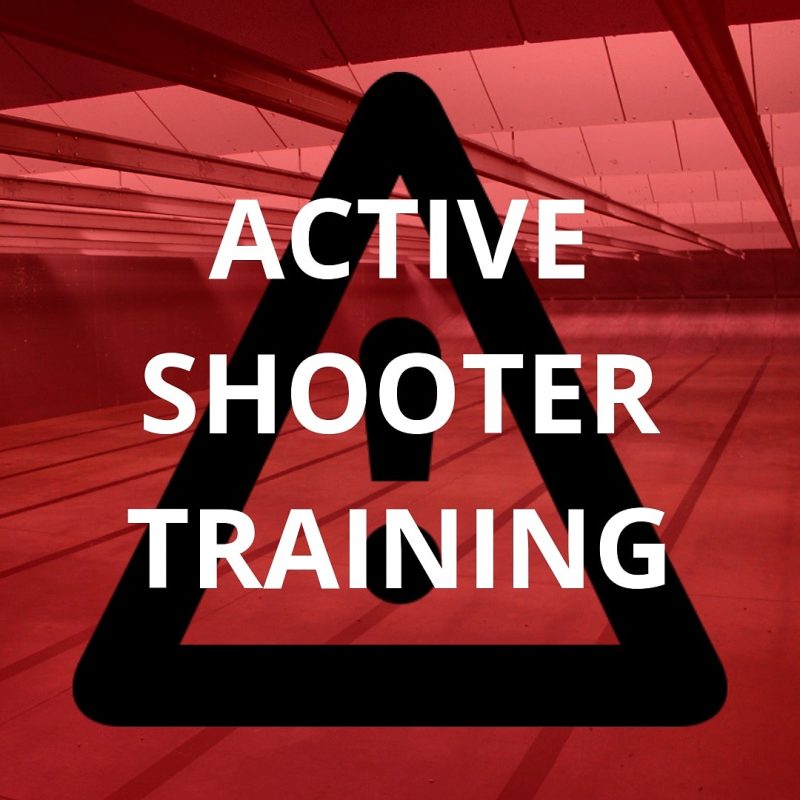Just How Active Shooter Training Improves Emergency Situation Reaction Preparedness
Just How Active Shooter Training Improves Emergency Situation Reaction Preparedness
Blog Article
Executing Active Shooter Training: Best Practices for Creating a Safe and Prepared Community Setting
As neighborhoods face the disturbing reality of energetic shooter incidents, the implementation of thorough training programs comes to be critical. A successful technique pivots on not only the development of customized curricula that attend to neighborhood threats but likewise the involvement of diverse stakeholders. By using a selection of training approaches, neighborhoods can ensure that all members are geared up with necessary abilities. The challenge lies in maintaining an adaptive structure that evolves with arising threats. What are the critical elements that can change a typical training program right into a robust version for area strength?

Recognizing the Demand for Training
In an era noted by boosting incidents of physical violence in public areas, comprehending the need for energetic shooter training has never ever been more essential. The frequency of mass shootings throughout various environmentsâEUR" such as colleges, workplaces, and purchasing centersâEUR" highlights the necessity for individuals and companies to be gotten ready for such emergency situations. Energetic shooter scenarios can unfold swiftly, leaving little time for individuals to respond effectively. Comprehensive training efforts can gear up individuals with the expertise and skills to respond emphatically.
Training promotes a feeling of empowerment and readiness, allowing individuals to feel even more secure in their surroundings. The benefits of energetic shooter training prolong past instant response; they consist of improving interaction procedures and enhancing overall security measures within companies.
Secret Parts of Effective Programs
Effective active shooter training programs include numerous crucial components that boost readiness and reaction capabilities. Initially, thorough curriculum development is important, making sure that training material matters, evidence-based, and customized to the specific demands of the organization or community. This includes recognizing the dynamics of active shooter occurrences and the psychological influence on individuals entailed.
Second, practical training scenarios must be utilized to imitate potential circumstances, allowing participants to exercise decision-making and feedback techniques in a regulated setting. These drills help with muscular tissue memory and develop self-confidence amongst participants.
Third, a concentrate on interaction methods is critical. Establishing clear lines of interaction amongst law enforcement, emergency -responders, and participants guarantees worked with feedbacks during an occurrence. Regular updates and correspondence course aid keep communication paths clear and effective.
4th, recurring evaluation and feedback devices must be integrated into the training program - active shooter training. Evaluating the efficiency of training via individual comments and efficiency metrics permits for continual improvement
Lastly, fostering a society of safety and security and readiness within the area urges alertness and aggressive measures, making sure that people are not just skilled however additionally involved in keeping a safe and secure setting.
Engaging Area Stakeholders

To properly engage these stakeholders, it is important to interact the goals and advantages of the training. Hosting educational sessions can assist clear up wikipedia reference the training's purpose, address worries, and describe the duties each stakeholder may play. Developing a stakeholder consultatory board can assist in recurring dialogue, enabling for varied perspectives and understandings to be integrated into the training program.
Structure connections with area leaders and organizations is additionally essential. Their assistance can enhance outreach initiatives, rise engagement, and make sure that training is customized to the unique needs of the neighborhood. In addition, stakeholders can assist in disseminating info and sources, enhancing the message of safety and preparedness.
Eventually, involving neighborhood stakeholders not only enhances the training campaign but additionally cultivates a sense of possession among locals, resulting in a more durable and educated area with the ability of reacting effectively to potential dangers.
Educating Delivery Techniques
Making use of a selection of training distribution techniques is necessary to fit the diverse discovering designs and demands of individuals in energetic shooter training programs (active shooter training). Efficient training can take several kinds, including talks, hands-on simulations, online components, and interactive workshops. Each approach offers a special function and can enhance the general discovering experience

On the internet components use versatility and ease of access, making it possible for individuals to learn at their very own pace. These can consist of videos, quizzes, and conversations to gauge understanding. Interactive workshops motivate seminar and problem-solving, advertising teamwork and communication abilities.
Including a blended strategy that integrates these approaches not just enriches the training experience but likewise ensures that individuals are much better prepared to react effectively in case of an active shooter circumstance (active shooter training). By resolving various learning preferences, organizations can produce a much more educated and responsive neighborhood
Continuous Assessment and Enhancement
Routine evaluation and improvement of active shooter training programs are essential to preserving their relevance and efficiency. As hazards evolve, so must the techniques and approaches used in training. Continuous evaluation ensures that training content reflects anonymous the most recent knowledge on active shooter events, integrating lessons gained from recent occasions and readjusting for emerging trends.
To promote this procedure, companies must establish feedback systems that consist of participant evaluations, expert testimonials, and occurrence debriefs. Gathering data on participant performance throughout drills and exercises is vital, as it highlights areas needing improvement and educates future training sessions. In addition, engaging with police and emergency situation responders can provide beneficial understandings into the usefulness and applicability of training procedures.
Consistently scheduled reviews of training products and techniques need to be mandated, promoting an environment of innovation and adaptability. Organizations must likewise encourage a society of ongoing understanding, where personnel really feel empowered to recommend changes based upon their experiences. By devoting to constant evaluation and enhancement, companies not only boost the efficiency of their active shooter training programs but likewise reinforce their general dedication to safety and readiness within the neighborhood.
Conclusion
Finally, reliable application of energetic shooter training necessitates a detailed strategy that prioritizes area engagement and reasonable simulations. By creating tailored educational programs, including varied training methods, and cultivating cooperation among stakeholders, neighborhoods can improve preparedness. go to this website Constant analysis and feedback systems are essential for adapting programs to emerging dangers, therefore strengthening general security. Inevitably, a dedication to recurring training and improvement cultivates a culture of vigilance and readiness, guaranteeing a much safer atmosphere for all area participants.
Report this page